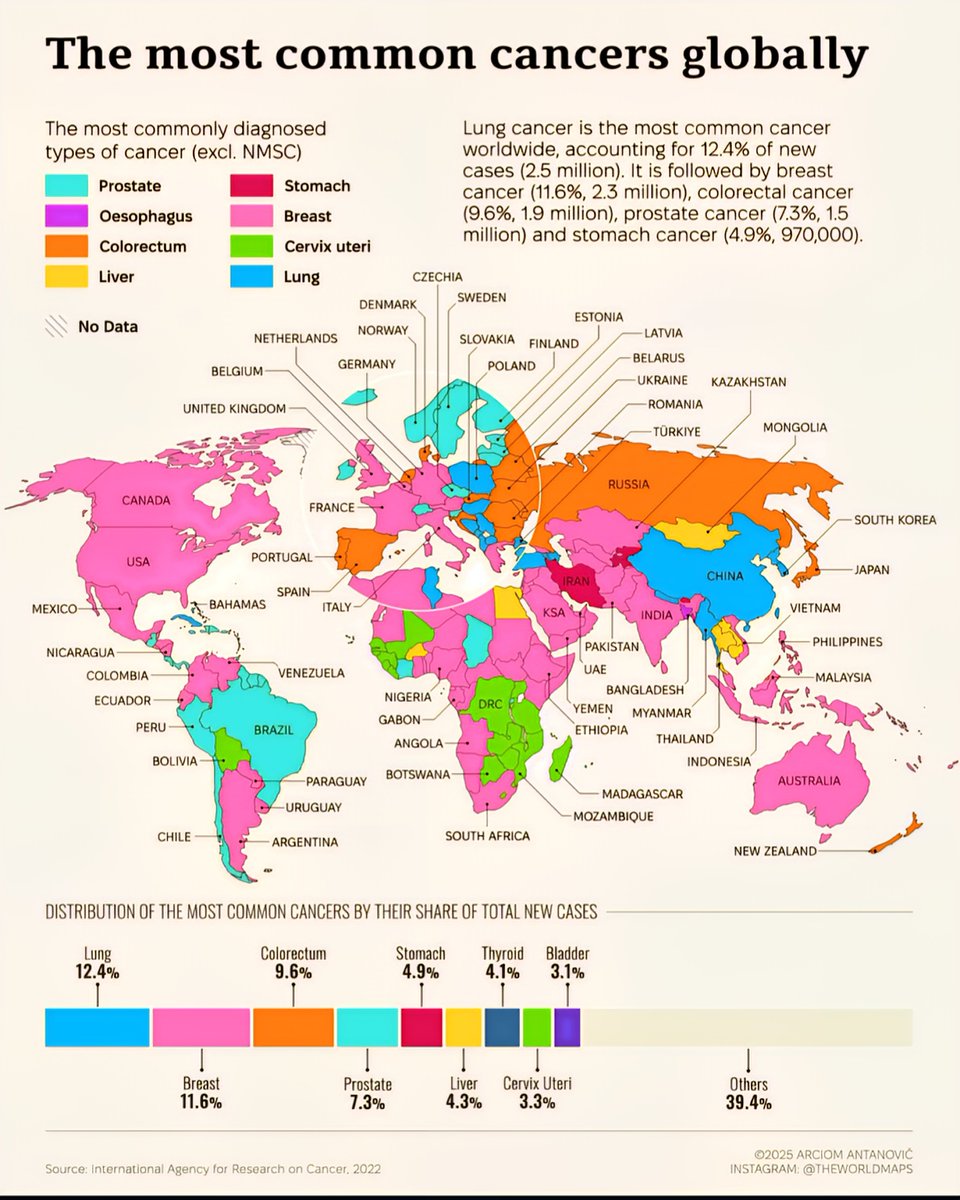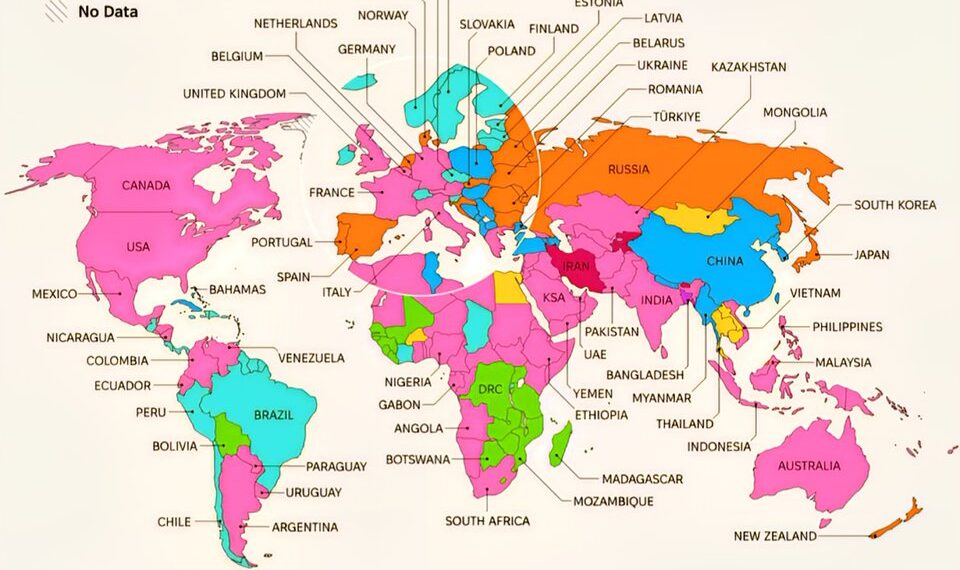Select Language:
The Most Common Cancers Globally in 2025

1. Lung Cancer: The Leading Cause of Cancer Deaths
Lung cancer continues to top the list of the world’s most deadly cancers in 2025, accounting for nearly 1.8 million deaths annually. It is primarily linked to smoking, but environmental factors such as pollution and exposure to harmful chemicals also play a significant role. Advances in targeted therapies and immunotherapy are offering new hope, but early detection remains a challenge. The disease’s prevalence varies across regions, with higher incidences in countries with higher smoking rates and urban pollution.
2. Breast Cancer: The Most Common Among Women Worldwide
Breast cancer remains the most diagnosed cancer among women globally, with over 2.3 million new cases reported this year. Improvements in screening programs, such as mammograms, have led to earlier detection, significantly increasing survival rates. Genetic factors, lifestyle, and reproductive history influence risk factors. There is continued emphasis on awareness campaigns, especially in developing countries where healthcare infrastructure is improving to accommodate early diagnosis and treatment.
3. Colorectal Cancer: A Growing Concern
Colorectal cancer, affecting the colon and rectum, continues to see rising cases, especially in younger populations under 50. Lifestyle factors like diet, sedentary habits, and obesity significantly contribute to its development. In 2025, screening initiatives such as colonoscopies are more widespread, helping catch precancerous polyps early. Researchers are investigating the role of microbiome health and its impact on colorectal cancer risk.
4. Prostate Cancer: The Most Common Male Cancer
Prostate cancer remains the leading cancer diagnosis among men worldwide, with nearly 1.4 million new cases this year. Age and genetic predisposition are dominant risk factors. Screening practices, including PSA testing, are more accessible, leading to earlier detection. Advances in precision medicine and targeted treatments have improved prognosis and quality of life for many patients.
5. Stomach Cancer: A Persistent Threat in Asia and Latin America
Despite declines in some regions, stomach carcinoma still claims countless lives, especially in East Asia and Latin America. Helicobacter pylori infection is a significant factor contributing to its development. Dietary habits, such as high-salt and smoked foods, also play a role. Efforts to implement better screening and treatment protocols are ongoing, but socioeconomic disparities still hinder early diagnosis in many communities.
6. Liver Cancer: Rising Due to Viral Infections and Environmental Factors
Liver cancer, particularly hepatocellular carcinoma, sees an uptrend linked to hepatitis B and C infections, as well as exposure to aflatoxins and environmental toxins. Regions with high hepatitis prevalence, like Southeast Asia and Sub-Saharan Africa, bear the brunt. Vaccination and antiviral treatments are crucial strategies to reduce incidence, but access remains uneven worldwide.
7. Cervical Cancer: Still a Major Health Issue in Low-Income Countries
Cervical cancer continues to affect many women, primarily in low-income nations where HPV vaccination and screening programs are less widespread. Despite being preventable, it accounts for over 600,000 new cases and 340,000 deaths annually. Public health campaigns and international aid efforts aim to increase vaccine coverage and awareness to reduce the global burden.
8. Pancreatic Cancer: The Silent Killer
Pancreatic cancer remains one of the most aggressive and deadly cancers globally, with a five-year survival rate below 10%. Its symptoms often go unnoticed until advanced stages, making early detection difficult. Researchers are working on liquid biopsies and novel imaging techniques to identify the disease sooner. Lifestyle factors, including smoking and obesity, also contribute to increased risk.
9. Cervical and Other Gynecologic Cancers
Beyond cervical cancer, ovarian and endometrial cancers are increasingly diagnosed in women of reproductive age, partly due to lifestyle factors and genetic predispositions. Advances in minimally invasive surgery and targeted therapies offer better management options. Continued emphasis on women’s health awareness is essential for early intervention.
10. Skin Cancers: Melanoma and Non-Melanoma
The incidence of skin cancers has surged, driven largely by increased UV exposure and tanning habits. Melanoma, although less common than basal or squamous cell carcinoma, is much more dangerous. Regular skin checks, sun protection measures, and public education on early signs are vital in combating this trend. Advances in immunotherapy have improved outcomes for melanoma patients significantly.
As the landscape of global cancer trends continues to evolve, increased investment in early detection, prevention, and equitable access to healthcare services remains vital in reducing the burden of these common diseases worldwide.





